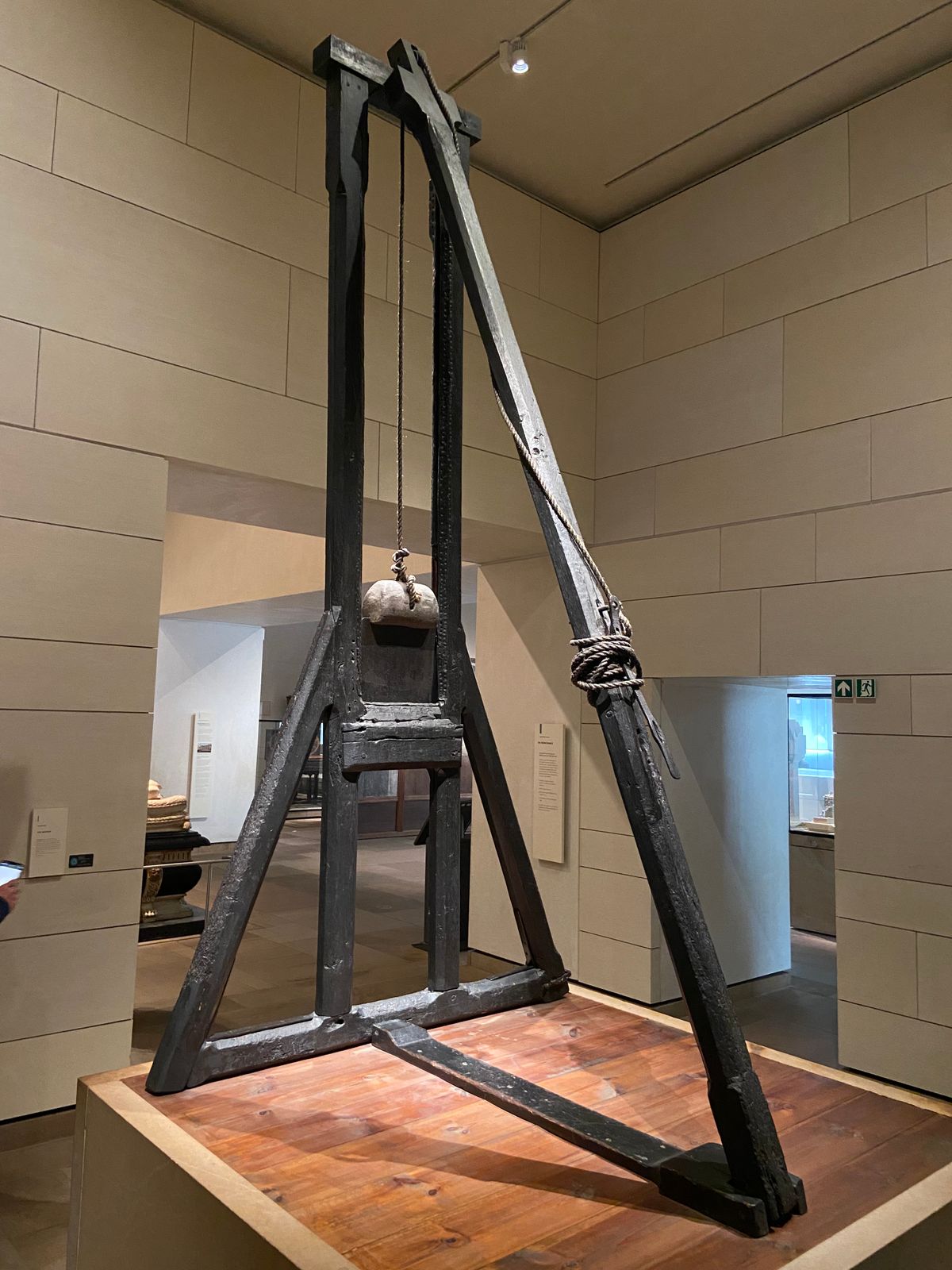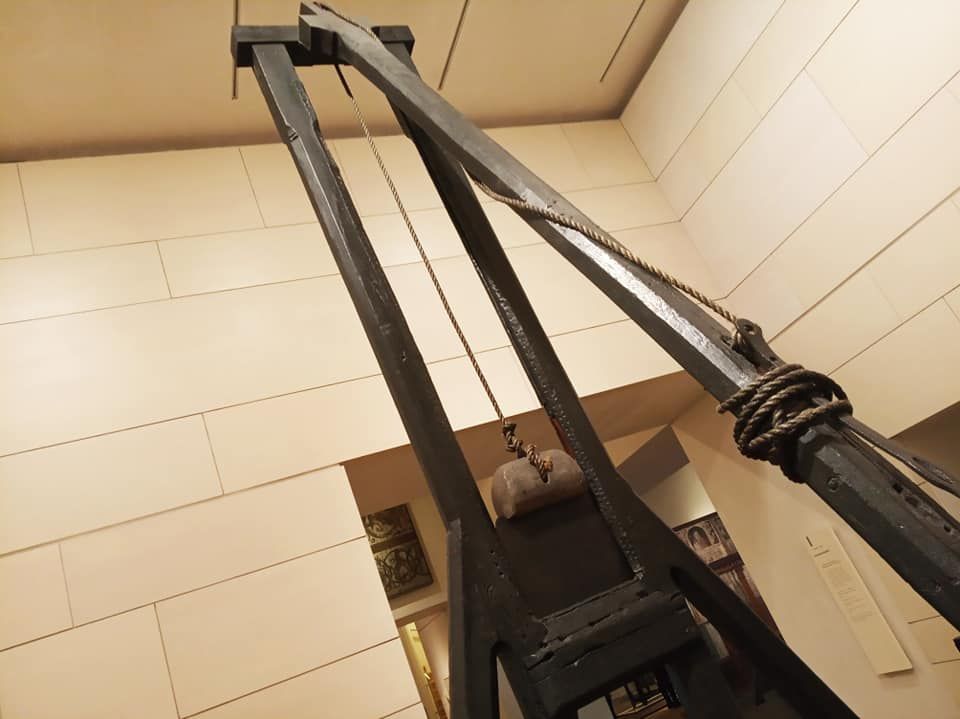About
Until the late 16th century, the traditional method of execution in Edinburgh was beheading by means of a sword. When the official sword had essentially worn out, authorities were even reduced to renting a suitable blade when needed.
This prompted the construction of a beheading device that became known as the Maiden (rumor has it the name came from the long period between its construction and its first use). Ironically, the man who is believed responsible for its introduction, James Douglas, fourth Earl of Morton, was executed by the Maiden in 1581. The device was designed so that it could be disassembled and transported to where it might be used—a sort of flat-pack for an implement of execution. It has been documented that it was used on the Edinburgh Castle Esplanade, the Grassmarket, and south of St. Giles, on the Royal Mile near the Mercat Cross.
It's said that Douglas based the concept for his design on another decapitation device: the Halifax Gibbet. However there are some important differences between the two. First off, the Maiden’s blade was driven downward by a massive lead weight, rather than a large wooden block. Secondly, the Maiden required the victim to stand and bend over, with the block for the neck about four feet from the floor, rather than laying prone. Arriving in this position was commonly referred to as "Kissing the Maiden."
Between 1564 and 1710 more than 150 people were executed on the Maiden, after which it was withdrawn from use. The beheadings usually took place at the Mercat Cross in Edinburgh. It was a horribly brutal performance. In a cruel twist of irony, if a person was condemned for stealing an animal—say, a horse—that very animal became the executioner. A cord would be attached to the horse, which was whipped and ran away, removing the peg that held up the blade.After the last execution in 1716, the Maiden was put into storage for years. When it was rediscovered, it was put on display at the Edinburgh Museum of Antiquities, which is now the National Museum of Scotland. Unlike the Halifax Gibbet, which is only available as a replica, this exhibit is the real thing.
Related Tags
Know Before You Go
The National Museum is free to enter. The Maiden is located in the Kindom of Scots exhibit, found on level one. There you will also find other instruments of capital punishment such as thumbscrews, stocks, and a Scold's bridle.
Community Contributors
Added By
Published
April 16, 2018








































